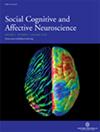联合行动研究中的脑电图超扫描实用指南》:从动机到实施
IF 3.1
2区 医学
Q2 NEUROSCIENCES
引用次数: 0
摘要
认知神经科学的发展带动了超扫描技术的出现,即同时测量多人的大脑活动。由于超扫描能够捕捉人与人之间为实现共同目标而协调行动时发生的神经过程,因此对研究包括联合行动在内的社会认知非常有用。在此,我们将为考虑使用超扫描研究联合行动的研究人员提供实用指南,以避免超扫描怀疑论者经常提出的顾虑。我们特别关注脑电图超扫描,因为它可以广泛使用,而且非常适合捕捉行动协调的细粒度时间动态。我们的指南涵盖了在规划超级扫描项目时可能出现的问题,从超级扫描是否适合回答研究问题到研究设计、因变量选择、数据分析和可视化等方面的考虑。通过遵循明确的指导方针,仔细考虑研究设计选择和其他方法决策的理论意义,联合行动研究人员可以减少可解释性问题,最大限度地发挥超扫描范式的优势。本文章由计算机程序翻译,如有差异,请以英文原文为准。
A Practical Guide to EEG Hyperscanning in Joint Action Research: From Motivation to Implementation
Developments in cognitive neuroscience have led to the emergence of hyperscanning, the simultaneous measurement of brain activity from multiple people. Hyperscanning is useful for investigating social cognition, including joint action, because of its ability to capture neural processes that occur within and between people as they coordinate actions toward a shared goal. Here, we provide a practical guide for researchers considering using hyperscanning to study joint action and seeking to avoid frequently raised concerns from hyperscanning skeptics. We focus specifically on EEG hyperscanning, which is widely available and optimally suited for capturing fine-grained temporal dynamics of action coordination. Our guidelines cover questions that are likely to arise when planning a hyperscanning project, ranging from whether hyperscanning is appropriate for answering one’s research questions to considerations for study design, dependent variable selection, data analysis, and visualization. By following clear guidelines that facilitate careful consideration of the theoretical implications of research design choices and other methodological decisions, joint action researchers can mitigate interpretability issues and maximize the benefits of hyperscanning paradigms.
求助全文
通过发布文献求助,成功后即可免费获取论文全文。
去求助
来源期刊
CiteScore
6.80
自引率
4.80%
发文量
62
审稿时长
4-8 weeks
期刊介绍:
SCAN will consider research that uses neuroimaging (fMRI, MRI, PET, EEG, MEG), neuropsychological patient studies, animal lesion studies, single-cell recording, pharmacological perturbation, and transcranial magnetic stimulation. SCAN will also consider submissions that examine the mediational role of neural processes in linking social phenomena to physiological, neuroendocrine, immunological, developmental, and genetic processes. Additionally, SCAN will publish papers that address issues of mental and physical health as they relate to social and affective processes (e.g., autism, anxiety disorders, depression, stress, effects of child rearing) as long as cognitive neuroscience methods are used.

 求助内容:
求助内容: 应助结果提醒方式:
应助结果提醒方式:


